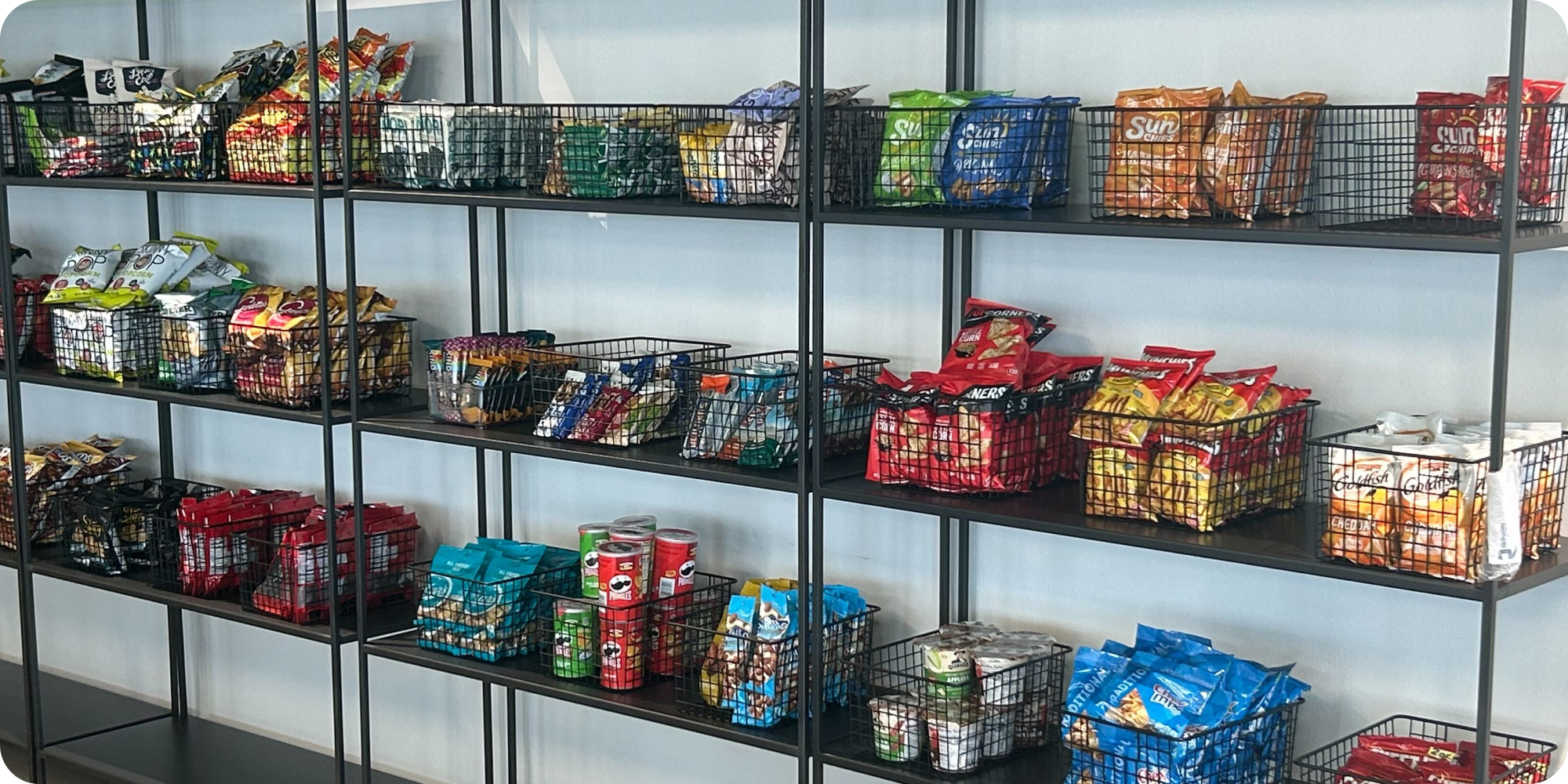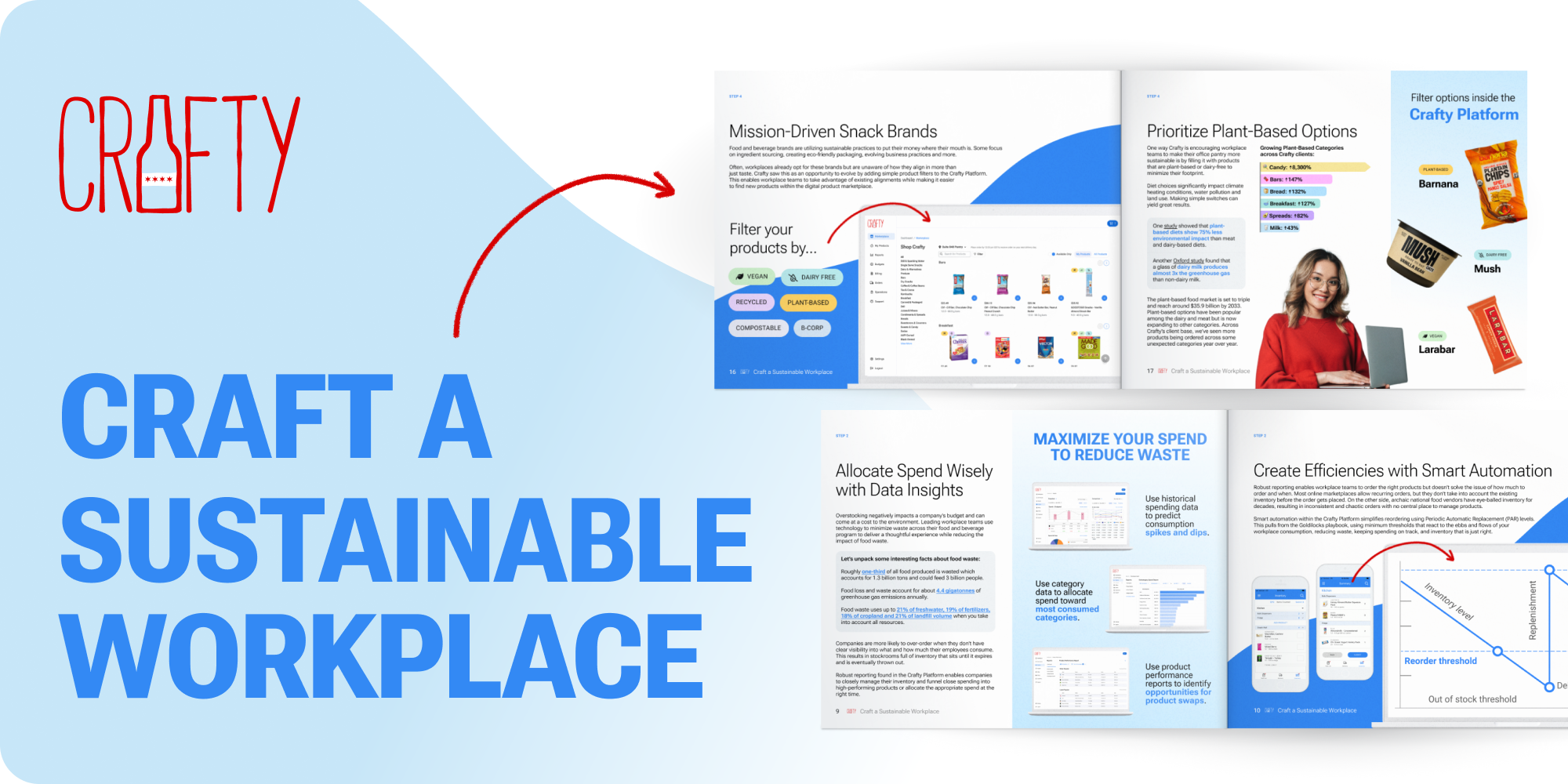July Workplace Insights and Trends Fresh Out the Pantry
Serving up the latest trends in workplace culture and office snacking.
Every company carves its own path when it comes to employee satisfaction and engagement. Yet, navigating this landscape can be daunting. In the last four years alone, we have seen a lot of change in the workplace. Trends and data provide a good compass for making informed decisions, but sifting through all the information is a full-time job in itself. Lucky for you, you have us! We dig through the data so you don't have to–pulling out all the key insights and how they apply to building a better workplace and a better office pantry.
In this month's Insights Fresh Out the Pantry, we dive into…
- How to build a magnetic return-to-office strategy
- How coffee affects workplace productivity
- How to understand Gen Z in the workplace
Unravel these insights and explore how they can empower your organization for years to come.
The magnet vs. mandate approach is the key to driving office attendance.
Companies like Cisco are investing in workplace experiences to drive traffic.

Return-to-office mandates are failing not because of the mandate itself but because of how they’re presented. Great Places To Work published a survey that found that when employees have a say in where they work, they are more likely to stick around. This doesn't mean remote work trumps all; it just means that employees want to have a choice. It's the job of workplace teams (and partners like Crafty) to make employees choose your office.
"Cisco, No. 1 on the 2023 Fortune Best Companies to Work For® List, has chosen a 'magnet' versus a 'mandate' approach," the study reports. "It uses town halls, team gatherings, hackathons, and career coaching sessions to attract workers to the office, delivering a valuable experience in exchange for employees' presence on-site."
Building office culture and camaraderie is more important than ever so commuting into the office is an experience not just an obligation. McKinsey dove into this topic and unlocked six drivers of a healthy workplace. Positive experiences across these drivers increase employee well-being, while negative perception drives down workplace satisfaction.
- Social interaction
- Mindset and beliefs
- Productive activity
- Stress
- Economic security
- Sleep
For example, social interaction is a top driver of employee happiness, and that happiness impacts a company's bottom line. When employees feel a sense of community and connection at work, this results in stronger innovation, engagement and quality of work. Harvard Business Review found that the most cutting-edge companies provide in-office incentives for workers that not only increase workplace happiness but also boost productivity, collaboration, and morale.
Let's be honest: The best social interactions don't happen in a conference room. They happen while grabbing a coffee, over lunch, or while taking a quick snack break. These casual moments create a space where employees can truly get to know the people they work with outside of what they do for the company.
"Food is that one thing that brings us all together as humans. Whether talking about a snack you're eating in a meeting or enjoying a cup of coffee with a coworker, those things bring humans together. The shared experience of food is kind of like talking about the weather, something everybody gets and appreciates."
Nathan Rosenstock Crafty CEO and Co-Founder
.png)
Workplaces that deliver a valuable office experience in exchange for their team's attendance see the return. Subsidized food and beverages enhance the office experience by delivering a backdrop for fostering meaningful connections, turning your office into a magnet.
Americans' coffee addiction hits a record high with 67% drinking coffee daily.
Coffee consumption has reached its highest percentage in the past 20 years.

This stat made us go:
Coffee consumption rose 10% from 2020 as people rely on coffee to get through their workday and life in general. The health benefits associated with coffee are numerous. Inc. reports that regular coffee drinking can reduce the risk of:
- Stroke by 20%
- Cancer up to 20%
- Type 2 diabetes by 30%
- Parkinson's by 30%
When it comes to your work performance, coffee has been found to make individuals more effective in boosting task recall.
- Nature Neuroscience found that those who consumed coffee after learning a new task heightened recall for up to 24 hours.
- A study in Consciousness and Cognition also found that caffeine (up to one cup of coffee) improved problem-solving and participants' ability to determine the best answer to a question posed.
- Sage Journal reports that coffee can strengthen team collaboration in group activities, like a work project that requires multiple stakeholder inputs and complex decision-making. It was also found that drinking a moderate amount of caffeine prior to a team activity enhanced an individual's task-relevant participation in the group and raised alertness.
Leading workplaces worldwide are tapping into this coffee-crazed culture by investing in a variety of coffee options. The Axios report found that drip coffee is the most popular option as it's the quickest way to get your caffeine fix. However, 18% of Americans opt for a latte at least once a week, and the trend is growing.
Our advice is to continue incorporating choice into your employees' caffeine options. This means regularly reevaluating your office coffee machine equipment to keep up with these trends. At Crafty HQ, we are trying out a new bean-to-cup machine with a fresh milk option to provide our employees with an easy and free way to get their favorite latté. Of course, as a company whose business is 50% coffee, we also have all the other coffee equipment, from keg to single-serve pod machines to drip coffee machines and beyond.
Gen Z isn't difficult to work with, they're just misunderstood.
Deloitte found that 82% of Gen Z employees value career achievements as part of their identity.

The media would have us believe that Gen Z is the "difficult" generation. They paint a picture of kids glued to their screens, unwilling to work hard, and caring little about their careers. Yet, new research shows that isn't the case at all.
According to Jabra, 82% of Gen Z employees value career achievements as part of their identity and prioritize career development and wellness benefits. The difference is that they are not afraid to leave a job that isn't serving them.
It's crucial to note that this generation, born between 1997 and 2012, is the first to be fully immersed in technology. In addition, they weathered the COVID-19 pandemic amidst life milestones like graduating college and entering the workforce. It's no wonder Gen Z has a unique perspective on life and work compared to their predecessors!
Deloitte surveyed over 22,000 respondents to better understand Gen Z's attitudes about work and career building, and the results were eye-opening. These are a few common themes:
- Having a sense of purpose is paramount:
- Learnings: 86% stated purpose is a driver in their overall job satisfaction and well-being.
- Takeaway: Offer clear career paths between managers and Gen Z workers, and outline how their role impacts the organization and world overall.
- Optimism about the state of the economy is rising:
- Learnings: 32% think the economy will recover and improve in the coming year. However, financial security is still a concern, and 15% of Gen Z'ers live paycheck to paycheck.
- Takeaway: Ensure your organization's leaders have transparent conversations about company health and pay structure and set expectations on raises, bonuses, and promotions. Gen Z employees appreciate honesty, and offering a forum for them to ask questions builds trust between your company and its youngest workforce.
- Environmental sustainability is a top concern:
- Learnings: 62% feel anxious about climate change and 2 in 10 Gen Z’ers and Millennials have changed jobs to better align their work with their environmental values.
- Takeaway: Cultivate a sustainable workplace and a great place to start is within your pantry program. Crafty’s Sustainability Report shares five steps essential to crafting a sustainable office pantry.
Conclusion
As organizations figure out how to bring people back to the office and strengthen team bonds, one thing stands out: there's no one-size-fits-all approach. Every company is on its own path to boost employee happiness and productivity, shaped by valuable insights and trends.
Here's a quick recap:
- Employee satisfaction remains a top value
- Coffee remains a pillar of office experience
- Gen Z is continuing to push boundaries and set trends in the workplace
Want to sip on more insights? Connect with our CEO Nate on LinkedIn!
🚨 NEW REPORT
CRAFT A SUSTAINABLE WORKPLACE
Explore the five practices leading workplaces use to build sustainable office pantry programs.
CRAFT
A BETTER
WORKPLACE?
Elevate your office food and beverage program with enhanced services managed in one innovative, centralized platform.


